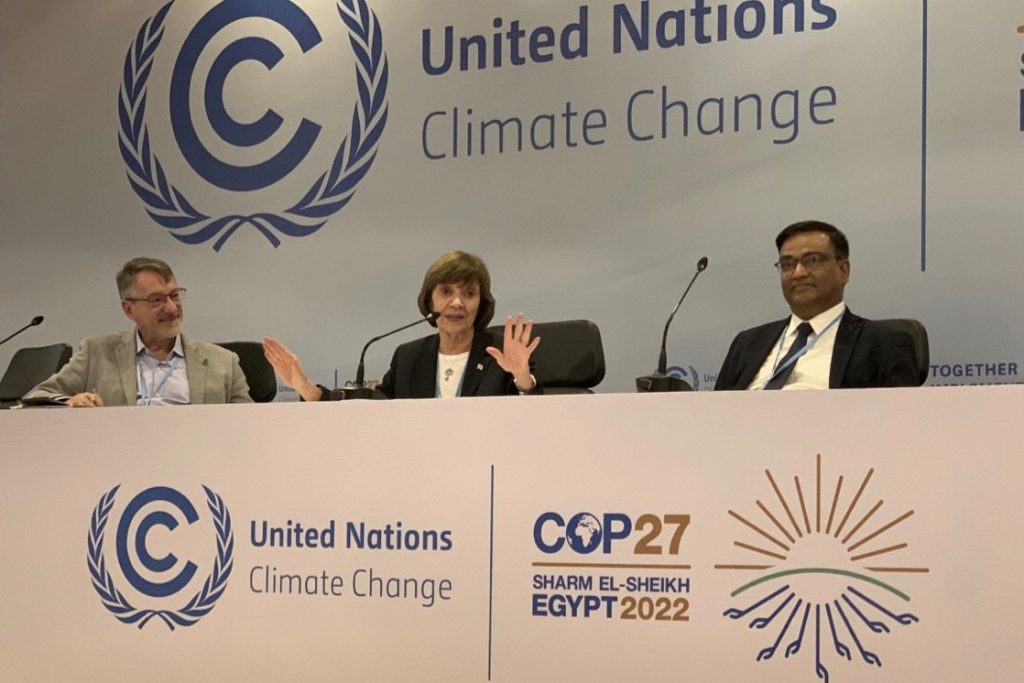The ongoing drive of farmers and ranchers to remain resilient in the face of climate change took center stage over the last several days in Sharm El-Sheikh, Egypt, where CDFA Secretary Karen Ross traveled to participate in the Conference of Parties 27 (COP27).
Secretary Ross highlighted California’s leadership on climate goals as well as cutting-edge implementation. The Secretary spoke of “multi-level action”– meaning an effort to weave climate ambition and the actions of local and regional governments into policy developments to accelerate vertically-integrated implementation and investment plans–and she emphasized the importance of implementing the Glasgow Climate Pact to keep global warming within 1.5 degrees Celsius of pre-industrial levels.
Secretary Ross described California’s ambitious methane reduction target, its methane-reducing investments in the dairy sector, and how the dairy industry has risen to the occasion in partnership with the state. Through CDFA’s Dairy Digester Research and Development Program (DDRDP), California dairies have installed 131 digester projects that capture 2.3 million metric tons of CO2 equivalent every year or more than 23 million metric tons of CO2 equivalent over the projects’ 10-year life of practice.
On Agriculture Day at COP27, Secretary Ross moderated a panel entitled “Farmers at the Center” at the United Nations Food and Agriculture Organization (FAO) pavilion. The panel showcased the diverse experience of farmers around the world and their efforts to fight climate change through climate-smart agricultural practices.
“Food production is so intertwined with climate,” said Secretary Ross. “Farmers are key to alleviating global hunger in a world with a growing population, and climate-smart agricultural practices can help them continue to do so in a hotter, drier future.”
The conversation highlighted the need to provide multiple approaches and practices to provide near-term and scalable solutions to the many challenges the world faces today and showed that there is no “one-size-fits-all” approach to farming in a changing climate. Panelists explained that with proper market signals and supportive policies, farmers can offer the keys to carbon sequestration, food security, and a healthy environment.
“To help increase these practices, we need to ensure that we have created the right market signals, enabling policies, and provide plenty of technical assistance,” Secretary Ross added. “We also must emphasize the importance of research, innovation, and technology in moving forward.”
USDA Secretary Tom Vilsack was also at the conference and highlighted the United States’ investment of $8 billion in climate-smart agriculture through the Partnerships for Climate Smart Commodities program and the Inflation Reduction Act, as well as the launch of the Agricultural Innovation Mission for Climate initiative, which is a partnership between the USA and the United Arab Emirates seeking to address global climate change and increase investment in climate-smart agriculture and food systems innovation over a five-year period.
Additionally, Secretary Ross met with the Deputy Premier and Minister for Climate, Environment, and Water for South Australia, Susan Close. The Secretary and the Minister discussed similar climate-related challenges facing California and southern Australia, including extreme heat, renewable energy production, and protecting biodiversity.



